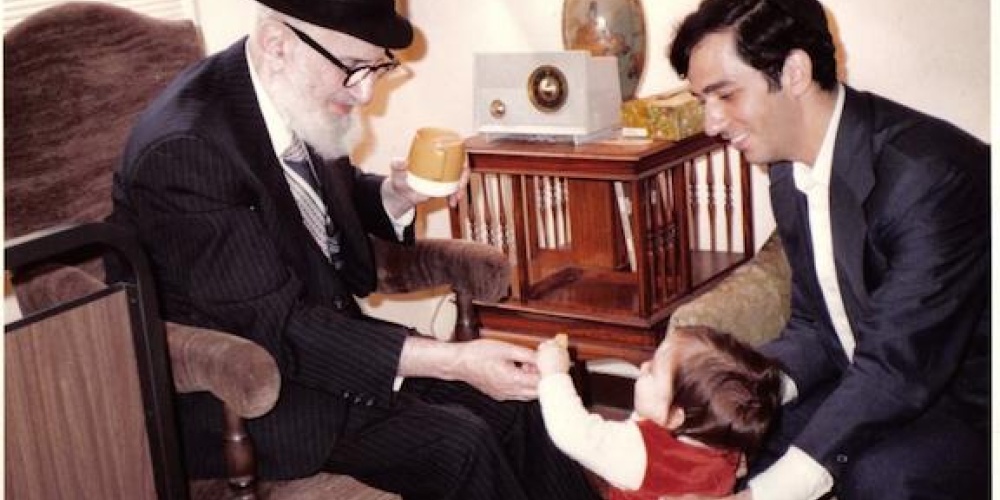
Family owned businesses comprise some 90% of all business enterprises in the United States, account for about 65% of gross domestic product and 75% of all new job hirings. Yet only some 30% survive to the second generation and a mere 12% of these businesses will be around in generation three (see here for example). Passing on a family heirloom is no easy task, and many things must go right to ensure a successful transition, whereas there are a multitude of factors that can derail the best of plans.
What is true in the world of business is true in the world of Torah. The list of great rabbis whose children not only are not their father’s equal but who have left the fold of traditional Judaism altogether is long indeed. It is not easy for children of great people – be they in business or the rabbinate - to continue the path of greatness[1].
It is no wonder our Sages have great praise for those scholars who are the children and grandchildren of scholars. “Rav Parnach said [in the name of] Rav Yochanan: he who is himself a scholar, and his son is a scholar, and his son's son too, the Torah will nevermore cease from his seed” (Bava Metzia 85a). A family that can maintain the high standards of piety and scholarship necessary to be a talmid chacham has made Torah part of the family fibre. “Rav Yermiya said: From henceforth [i.e., after three generations] the Torah seeks its home.”
It is here that Torah and business diverge. Whereas only some 4% of family businesses survive to the fourth generation a family that can produce three successive generations of Torah scholars is destined to continue doing such for many years.
Creating such a family is no easy task. The Gemara relates how Rav Yosef fasted for forty days so that his Torah knowledge would not leave him, another forty days so that his children would not forget Torah and one hundred days so that Torah would not depart from his children’s children.
While Rav Yosef fasted lest he forget Torah, Rav Zeria fasted in order to forget Torah. “When Rav Zeira emigrated to the Land of Israel, he fasted a hundred fasts to forget the Babylonian Gemara, that it should not trouble him.”
What was so terrible about the method of study in Bavel that Rav Zeira felt compelled to fast 100 times to forget the Torah he learned there?
One could simply explain that the Torah of the Land of Israel and that of Bavel, like any two great centres of learning in any field, offered different perspectives on the same material. In order to fully grasp the Israeli approach, Rav Zeira wanted to ensure he came with an open mind. He did not want the way he previously learned something to impact on the way he learned it a second time[2].
Yet our commentaries understood that Bavel and Israel were not two equal centres of Torah learning, but that the learning in Israel was much better. Just as fasting on Yom Kippur is meant to remove the stain of sin from our souls, Rav Zeira was fasting so that he would be able to cleanse himself from the negative impact of the Babylonian style of learning.
Rashi, basing himself on the Gemara in Sanhedrin, notes the argumentative nature of the Babylonian scholars. “Rav Oshaia said: What is the meaning of the verse, And I took unto me the two staves; the one I called no'am, pleasantness, and the other I called chovlim, those who injure? No'am refers to the scholars of Palestine, who are shemanimim, pleasant with each other in [debates of] halacha; chovlim, to the scholars of Babylon, who shmechablim, injure [the feelings of] each other in halacha” (Sanhedrin 24a). Rav Zeira yearned for a pleasant atmosphere in which to learn where, when rabbis disagreed, they did so most pleasantly.
The Maharsha goes much further in his critique of Babylonian (and Polish) learning, explaining that whereas in Israel the goal of Talmudic study was to “widen [one’s understanding] of the teaching” in Bavel, “it is possible that they were mepalpelim[3] as is done today (16th century Poland) that whoever knows how to make more pilpulim of nothingness, behold, it is to be praised; and everyone attempts to rebut his colleague, as they are also called ‘those who injure and are not pleasant with each other in halacha’ and therefore they teach that which is against the law; and they are also called ‘those who lead us in the dark’ and this is what Rav Zeira meant when he declared [I want to forget] lest it distract me because this type of pilpul removes one from the truth.”
While the Maharsha was clearly intent on stopping the new pilpul style that had become popular in Poland in his day[4] – and was later the subject of much attack by the haskalah – his equation of this harmful pilpul to that of the style of Babylonian learning is quite shocking. But it sure explains why Rav Zeira would want to forget such Torah.
Yet as alluded to above, and as we shall, please G-d, see when we learn Sanhedrin, the Babylonian Talmud itself has sharp critiques on the style of learning in Bavel. It is this openness to self-criticism that almost paradoxically helps make the Talmud Bavli the most authoritative work in all of Jewish literature.
Truth be told, forgetting can be the best method of growing in learning. Sometimes the only way to ensure that one continues to grow in Torah is to take a step back, try new approaches and broaden one’s horizons.
Rav Yitzchak Hutner argues that it is precisely by forgetting Torah that we can make Torah even greater. He quotes the teaching of our Sages (Temurah 16a) that 300 laws were forgotten during the mourning period for Moshe Rabbeinu, which were “retrieved” by Otniel ben Kenaz through deductive reasoning. The process of restoring the Torah that had been forgotten added many new insights to Torah. In a similar vein, the entire notion of rabbinic debate is only due to the fact that Torah was forgotten – a process that began with the students of Hillel and Shammai (see Sanhedrin 88a). And yet our Sages declare that both Beit Hillel and Beit Shammai are “words of the living G-d”[5] (Eiruvin 13b). The debates arising out of forgetfulness brought forth a deeper understanding of Torah.
It is this forgetfulness, posits Rav Hutner, that we celebrate on Chanukah, where the “the wicked Greek kingdom rose on the nation of Israel to make them forget Your Torah.” It was through this forgetting – and hence the need to recreate the lost Torah – “that new streams of Torah were opened up.” Chanukah is celebrated in the dark of winter. It is only in the midst of darkness that the light of the menorah can offer illumination. Only by the forgetting of Torah can Torah continue to grow.
That forgetting Torah can be so beneficial is something most comforting to those of us who have managed to forget so much of what we have learned – provided we make sure to learn it again.
[1] Our rabbis did not necessarily think this was a bad thing. “And why is it not common for scholars to give birth to sons who are scholars? Said Rav Yosef, ‘that it might not be maintained, the Torah is their inheritance’” (Nedarim 81a).
[2] Rav Soloveitchik when teaching something he had taught before, would learn it completely anew as if learning it for the first time. And if ever a student would point out ‘but last year you explained it differently,’ the Rav would tell him to forget what was learned last year.
[3] Pilpul is a hard term to translate and there are various forms of pilpul. The type the Maharsha is criticizing is the pilpul of those who argue for the sake of arguing or to display intellectual prowess, as opposed to seeking the true and simple meaning of the text.
[4] The Maharsha was not the only one to criticize the excessive use of pilpul in Ashkenazic lands. His older colleague and cousin the Maharal of Prague was not only opposed to pilpul, he railed against the entire educational system, where children were introduced to the study of Talmud at much too young an age. He unsuccessfully advocated for following the teaching of our Sages (Avot 5:25) that students should be introduced to the study of Mishna, i.e., Jewish law, at the age of 10 and Talmudic reasoning only at the age of 15.
[5] If I understand Rav Hutner correctly, Torah becomes greater through these debates despite the fact that one of the sides is wrong. Nonetheless, through their rejected arguments and views we gain a fuller and sharper understanding of Torah. While fascinating, “these and those are the words of the living G-d” is understood by many to mean that Jewish law is full of grey, with legitimate reasons to say something may or may not be allowed. The debates are which side of the grey is more pronounced with there being no definitive view with each reflecting a possible and hence correct interpretation of the words of the living G-d.



